I'm. trying to make my code cleaner by separating my code into smaller files. When I have a single ViewController, it works! However, when I try to add a subview, it doesn't. Can anyone look at my code and tell me what's wrong?
Code:
ViewController (just view controller, when it works):
import UIKit
class ViewController: UIViewController {
private let textField = UITextField()
override func loadView() {
let view = UIView()
self.view = view
let textField = UITextField()
textField.translatesAutoresizingMaskIntoConstraints = false
view.addSubview(textField)
view.addConstraint(textField.leadingAnchor.constraint(equalTo: view.leadingAnchor))
view.addConstraint(textField.trailingAnchor.constraint(equalTo: view.trailingAnchor))
view.addConstraint(textField.topAnchor.constraint(equalTo: view.safeAreaLayoutGuide.topAnchor))
}
override func viewDidAppear(_ animated: Bool) {
super.viewDidAppear(animated)
textField.becomeFirstResponder()
view.backgroundColor = .red
}
}
ViewController (when trying to add the subview)
import UIKit
class ViewController: UIViewController {
override func viewDidLoad() {
super.viewDidLoad()
let searchViewController = SearchViewController()
view.addSubview(searchViewController.view)
}
}
SearchViewController
import UIKit
class SearchViewController: UIViewController {
private let textField = UITextField()
override func loadView() {
let view = UIView()
self.view = view
let textField = UITextField()
textField.translatesAutoresizingMaskIntoConstraints = false
view.addSubview(textField)
view.addConstraint(textField.leadingAnchor.constraint(equalTo: view.leadingAnchor))
view.addConstraint(textField.trailingAnchor.constraint(equalTo: view.trailingAnchor))
view.addConstraint(textField.topAnchor.constraint(equalTo: view.safeAreaLayoutGuide.topAnchor))
}
override func viewDidAppear(_ animated: Bool) {
super.viewDidAppear(animated)
textField.becomeFirstResponder()
view.backgroundColor = .red
}
}
SceneDelegate (additional file to show you that I successfully removed storyboards and make a programmatic UIKit available)
import UIKit
class SceneDelegate: UIResponder, UIWindowSceneDelegate {
var window: UIWindow?
func scene(_ scene: UIScene, willConnectTo session: UISceneSession, options connectionOptions: UIScene.ConnectionOptions) {
// Use this method to optionally configure and attach the UIWindow `window` to the provided UIWindowScene `scene`.
// If using a storyboard, the `window` property will automatically be initialized and attached to the scene.
// This delegate does not imply the connecting scene or session are new (see `application:configurationForConnectingSceneSession` instead).
guard let scene = (scene as? UIWindowScene) else { return }
window = UIWindow(windowScene: scene)
window?.rootViewController = ViewController()
window?.makeKeyAndVisible()
}
func sceneDidDisconnect(_ scene: UIScene) {
// Called as the scene is being released by the system.
// This occurs shortly after the scene enters the background, or when its session is discarded.
// Release any resources associated with this scene that can be re-created the next time the scene connects.
// The scene may re-connect later, as its session was not necessarily discarded (see `application:didDiscardSceneSessions` instead).
}
func sceneDidBecomeActive(_ scene: UIScene) {
// Called when the scene has moved from an inactive state to an active state.
// Use this method to restart any tasks that were paused (or not yet started) when the scene was inactive.
}
func sceneWillResignActive(_ scene: UIScene) {
// Called when the scene will move from an active state to an inactive state.
// This may occur due to temporary interruptions (ex. an incoming phone call).
}
func sceneWillEnterForeground(_ scene: UIScene) {
// Called as the scene transitions from the background to the foreground.
// Use this method to undo the changes made on entering the background.
}
func sceneDidEnterBackground(_ scene: UIScene) {
// Called as the scene transitions from the foreground to the background.
// Use this method to save data, release shared resources, and store enough scene-specific state information
// to restore the scene back to its current state.
}
}

